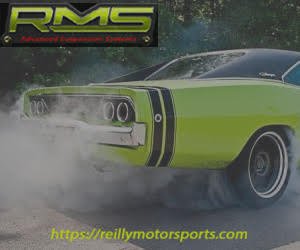
Over the past few years, Dodge has been on a crusade to bring horsepower to the masses, and nowhere was that message clearer than at SRT’s recent invasion of Indianapolis Motor Speedway with the Durango SRT and the Challenger SRT Hellcat Widebody as well as their assault on the drag strip at Lucas Oil Raceway with the quickest production car in history, the wheelie poppin’, nine-second SRT Demon.
“Isn’t the future about electrification and anonymous vehicles?” posited Tim Kuniskis, head of passenger car brands for FCA North America, during the technical presentation. “If you’ve been paying attention to Dodge over the past few years, you’ve probably noticed that we have been working hard to differentiate ourselves from the rest of the industry.”
His strategy seems to be working too, particularly when it comes to the LX platform vehicles – while car sales have dropped by more than 25% over the past few years as the public shifts to crossovers and SUVs, Challenger and Charger sales are up by 40%, no doubt in part due to image enhancement provided by 707 horsepower Hellcat models as well as the performance bargain offered by the 6.4-liter R/T Scat Packs.

“Take a step back from MPGs, weights, and measures,” Kuniskis suggested. “Think about how these cars don’t fit in – they stand out.”
As FCA’s domestic performance brand, Dodge has been tasked with regularly dishing out exciting new models to keep the enthusiast contingent of the public captivated, a task which has become significantly more difficult with the recent discontinuation of the Viper, the brand’s halo supercar since 1992. But with the SRT parts bin currently stocked to the rafters with go-fast hardware, Dodge saw an opportunity to take the Durango where no three-row SUV has gone before and apply the Demon’s bulging bodywork to the Challenger SRT Hellcat for more grip.
Speak of the Devil, it turns out the Demon is fast – really fast, as we discovered when launching off its factory-installed trans brake at the strip before heading out for a cruise around town in this 840 horsepower monster. Come along with us as we fulfill childhood fantasies we never knew we had.

Durango SRT – Zero to 60 miles per hour in the mid-four second range, 12.9 seconds in the quarter mile, and a braking distance of 115 feet from 60 mph to zero – these are not performance statistics you expect to see linked to a three-row SUV with a best-in-class 8700-pound towing capacity.
“This is our three-row Charger,” quipped Pete Jacobsen, vehicle development manager for the Durango SRT. “The first time we brought the Durango SRT to our execs to show them the ride of the vehicle, we wanted to show them the two faces of this SUV – a performance vehicle and a family vehicle. After ride compliance testing, we then took them to the handling course – almost every person said after the first corner, ‘This car doesn’t corner like a Durango – it feels like something much smaller.’”
Indeed, out on the Grand Prix course at the Brickyard, the SRT-infused Durango feels more like a Jeep Grand Cherokee SRT. There’s a good reason for that too, as they share a 6.4-liter, 475 horsepower Hemi V8, an eight-speed, paddle-shifted automatic gearbox, huge Brembo six-piston front brakes. Both also send the grunt to all four corners through an all-wheel drive system, which here in the Durango can transfer up to 70 percent of the power to the rear wheels when called upon to do so.
Out on the road course you’ll occasionally be reminded that physics can only do so much for a 5200-pound SUV, but the Durango’s SRT-tuned suspension – which includes stiffer springs, bigger sway bars, and adaptive dampers that stiffen or soften depending on which drive mode is selected – keep the chassis well composed at the triple digit speeds that the big Hemi generates with ease.

Widebody Hellcat – While the Challenger has always been a grand touring muscle car in the most traditional sense ever since its debut in 2008, in recent years its pony car rivals have shrunken down in pursuit of their sports car aspirations. While the Widebody treatment adds more tire to the equation – in turn more grip when launching, braking, and turning – the fundamental story hasn’t changed.
“This car is not trying to be a Mustang GT350R or a Camaro 1LE,” Kuniskis explained. “But we always knew it would be in the 10s [from the factory] with more tire. What we underestimated was how much better it would handle.”
In testing, Dodge discovered that the Widebody Hellcat, which rolls around on unique 20×11 “Devil’s Rim” wheels wrapped in fifth-generation Pirelli Pzero summer tires measuring 305mm wide at all four corners, was nearly two seconds a lap faster than the standard Hellcat around the 1.7-mile road course at the Chrysler Proving Grounds, which pairs well with the Widebody’s reported 10.9-second quarter mile time.
Warming up around Indy’s GP course the sensation remains similar to that of the standard-fender Hellcat, though the new electrically-assisted steering system applied to the Widebody cars (the standard Hellcat stays hydraulically assisted) now offers three different levels of steering weight so drivers can adjust to taste.
After bringing the mechanicals up to temperature we began to open up the taps and the benefits of the wider contact patch became clearer, as it allows the driver to brake later, carry more speed through corners, and dip into the loud pedal with more confidence on corner exit without turning the entire operation into a smoke show. With 707 horsepower and 650 pound-feet of torque at the command of your right foot the Widebody Hellcat will still incinerate a set of rear tires in haste when called upon to do so, but the additional grip now makes this a more deliberate process.

The Demon – How does one describe a nine second street car without falling into perceived hyperbole? It’s the fastest factory-produced vehicle in history – 2.3 seconds to 60 mph and 9.65 seconds to hit the quarter mile mark. It has the most powerful factory-produced V8 in history, delivering 840 horsepower and 770 pound-feet of torque on 100-octane race fuel and 808 hp / 717 lb-ft on pump gas. It comes from the factory with specially-developed drag radials, and it can, in fact, lift the front wheels off the ground just a bit if you get a good launch.
No doubt the performance of the Challenger SRT Demon is impressive – the first time I launched off the trans brake – another production car first – I was greeted by nearly 1.8g of accelerative force hurling me down the drag strip, each 400 mililsecond shift from the transmission’s Drag Mode tuning knocking my head into the seatback with authority.
“Beyond the horsepower, it’s the torque that’s going to push the car off the line,” explained Jim Wilder, vehicle development manager for the Challenger SRT and Charger SRT. “But we still wanted more, so we added the Torque Reserve system, which allows us to launch with eight pounds of boost to get off the line quicker. And while the transmission is a stock Hellcat 8-speed, we swapped in a new torque converter with more stall speed, which delivers an 18 percent increase in torque multiplication. It really transformed the way the car feels and behaves at the drag strip.”
What might be even more impressive about the Demon is that after spending half a day with the car, you start to realize that this isn’t just some kind of publicity stunt – this is a real car that’s emissions legal, comes with a factory warranty, and is totally civil when driven on the street. “This car has to perform not just on day one, but 120,000 miles down the road,” said Chris Cowland, chief engineer for SRT’s powertrain division. “There are no easy passes for durability requirements.”

Running non-stop for hours at a time at Lucas Oil Raceway on a 95-degree day with about a billion percent humidity the Demon certainly proved it, launching with the same ferocity at the end of the session that it did the after the first time we scrubbed the tires using the car’s line lock feature. Much of the credit goes to the Demon’s SRT Power Chiller and After-Run Cooler systems which, working in conjunction, reduce intake air temperatures by as much as 45 degrees and keep the car running consistently pass after pass without heat soak issues.
“Why build a nine second car?” Kuniskis offered when explaining the rationale behind the Demon. “It’s not apparent until you talk to the people who worked on the project – they missed the first muscle car era, and dreamed of a time when you could find 426 Hemis in the showroom. That made an impression on us and how we could position ourselves as a brand – we knew we could do the same thing today.”
With only 3300 examples of the car are earmarked for production, the Demon’s incredible performance and charisma weren’t conceived with volume sales in mind. This is Dodge’s rolling Super Bowl ad, a defiant middle finger to an automotive landscape that’s currently obsessed with downsizing, efficiency at any cost, and the gradual removal of the driver from the driving experience. The Dodge Challenger SRT Demon embodies none of those traits.
“We don’t apologize for our differences with the rest of the industry,” Kuniskis added. “We embrace them.”



















































